The John Deere X350 is a staple of lawn care for homeowners and professionals alike, praised for its robust construction and precise mowing capabilities. Yet, no machine is without its quirks and the X350 is no exception. Recognizing the common issues that may arise can help equip you with the knowledge to maintain your lawn tractor’s performance and extend its operational lifespan. Whether it’s fine-tuning the engine, troubleshooting the electrical system, or addressing steering and movement, understanding these challenges is key.
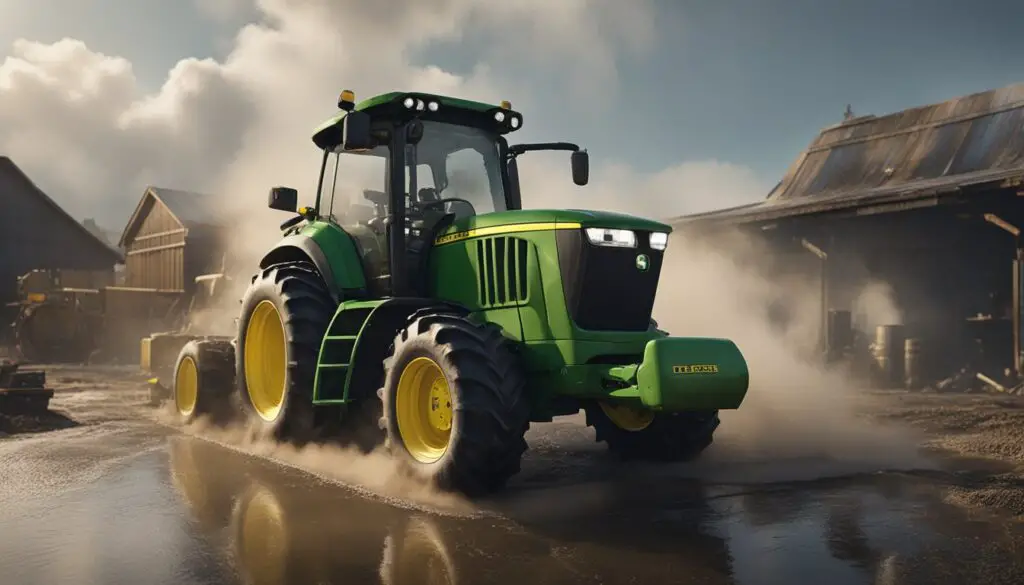
Regular care and maintenance are the bedrocks of keeping your John Deere X350 running smoothly. Learning about the tractor’s fundamental features and the intricacies of its maintenance guidelines will empower you to tackle problems head-on. This includes dealing with engine performance issues, ensuring the drive and transmission are functioning properly, and keeping the mower deck in good condition for a quality cut. Implementing preventative measures and following best practices will minimize the frequency and severity of potential problems, thus securing your investment in the long run.
Key Takeaways
- Understanding your John Deere X350’s features and maintenance needs ensures lasting performance.
- Addressing common issues promptly helps prevent further complications with your lawn tractor.
- Effective troubleshooting and maintenance keep your X350 running efficiently and safely.
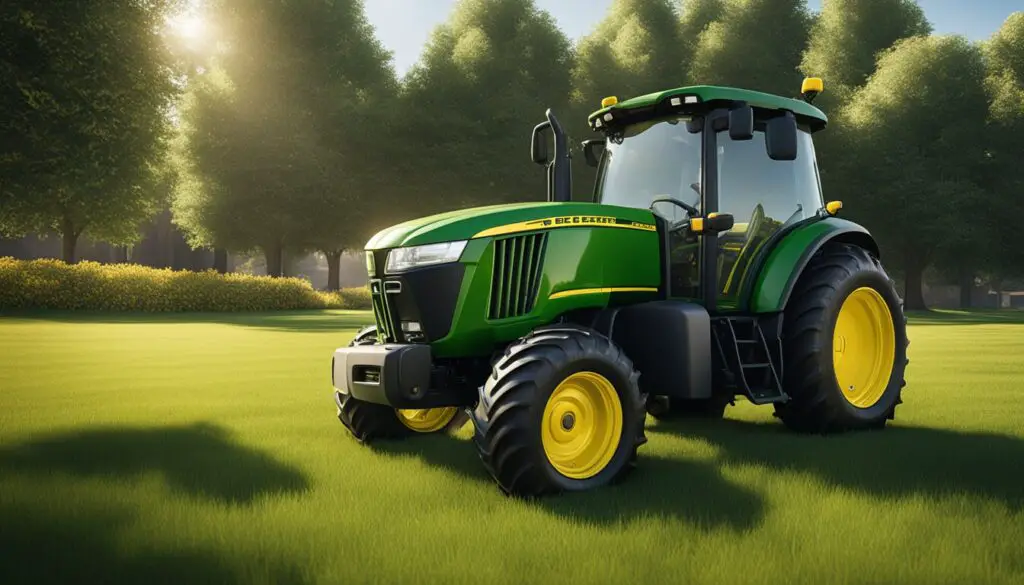
Regular Maintenance Guidelines
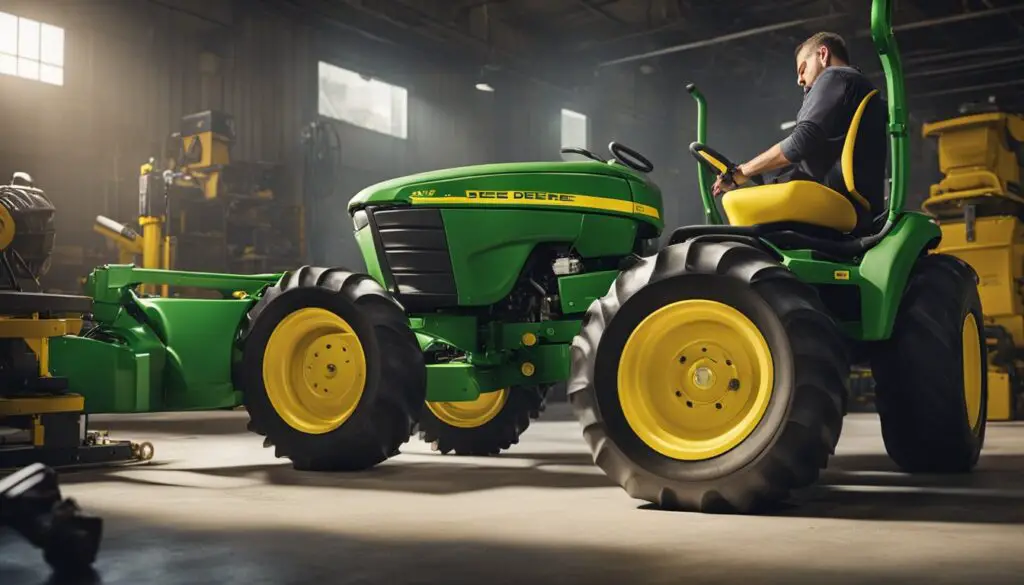
Keeping your John Deere X350 in top working condition requires regular maintenance. This means consistently checking and servicing crucial parts of your mower to prevent common problems and prolong its operating life.
Engine Maintenance
Your X350’s engine is the heart of its operation, so keeping it running smoothly is essential. Check the oil level before each use and change the oil after the first 8 hours of use; afterward, do so every 50 hours. Replace the air filter annually to ensure proper airflow and engine cooling — a clogged air filter can lead to overheating. Inspect the cooling fins and spark plugs for debris and wear, cleaning or replacing as necessary.
- Oil Level: Use dipstick; fill up if low.
- Air Filter: Replace yearly or when visibly dirty.
- Cooling Fins: Clean regularly.
- Spark Plugs: Check and replace if corroded.
Transmission Care
Your mower’s transmission is crucial for smooth operation. Keep an eye on the transmission fluid level; low fluid can lead to transmission issues. Regularly check for leaks and refer to your user manual for the recommended maintenance schedule. Ensuring proper belt tension also falls under transmission care and should be checked periodically.
- Fluid Levels: Check according to manual; top up if needed.
- Belt Tension: Inspect for proper tightness; adjust as necessary.
Mower Deck Adjustment
Correct mower deck adjustment keeps your lawn looking even and extends the life of your mower blades. Before each use, verify that the mower deck is level and the blades are at the correct height for your lawn’s current condition. Check the mower engagement to be certain it’s performing as expected; any issue here can lead to uneven cutting.
- Deck Level: Adjust to be even side-to-side.
- Blade Height: Set based on grass length.
- Mower Engagement: Observe for correct operation.
Electrical System Troubleshooting
When your John Deere X350 experiences electrical issues, it’s generally centered around the battery and its connections or the components of the ignition and starting system. Proper diagnosis with tools like a multimeter is key to identifying and fixing electrical problems.
Battery and Connections
Your John Deere X350’s battery is the heart of the electrical system. To ensure it’s functioning properly:
- Check the battery voltage with a voltmeter. It should read around 12.6 volts when fully charged and with the engine off.
- Inspect battery terminals for corrosion. Clean them with a wire brush and apply dielectric grease to prevent future corrosion.
- Tighten any loose connections on the battery terminals to ensure reliable operation.
Pro Tip: If your battery repeatedly dies or won’t hold a charge, you may need to test the alternator and stator—the tractor’s charging system components—with a multimeter to make sure they’re generating adequate charge.
Ignition and Starting
The key switch, safety switch, ignition module, and wiring play critical roles in starting your tractor.
- A faulty ignition switch or safety switch can hinder starting. You can test these switches with a multimeter set to the continuity setting.
- Inspect all spark plug wires for breaks or corrosion. Replace any that appear worn or damaged.
- If there is no spark when you attempt to start, the problem might lie with a faulty ignition coil or module.
- Blown fuses or wiring issues can interrupt power to the starting circuit. Check the mower’s fuses and replace any that are blown. Look at the wiring for any signs of wear, fraying, or disconnections.
Remember, electrical troubleshooting can be complex, and safety is paramount. If you feel unsure at any point, consult a professional for repair.
Engine Performance Issues
As you maintain your John Deere X350 lawn tractor, you might encounter a few engine performance issues that can affect the tractor’s operation. This section will guide you through some common problems like overheating, fuel-related issues, and unusual engine noises.
Overheating Factors
One main cause of engine overheating is a blocked air intake screen. When debris accumulates, it restricts airflow, leading to higher engine temperatures. Another issue could be clogged cooling fins which, similar to the air intake screen, need to be clear to dissipate heat effectively. Checking your engine oil level is crucial as well; low oil can lead to excessive heat build-up. Always ensure that the vents on the fuel cap are clear, as blocked vents can cause a vacuum in the fuel system and contribute to overheating.
Fuel and Combustion
A clean fuel filter and properly functioning carburetor are essential for smooth engine operation. Any obstruction in the fuel filter can lead to fuel supply issues that might manifest as engine misfires or backfiring. If you observe black fuel smoke, this could be indicative of a rich fuel mixture or trouble with the carburetor needle valve. Regularly check your fuel pump for proper function, and always use stabilized fuel to avoid issues with old fuel. If your tractor is hard to start, inspect for a bad battery or loose terminals, which can interfere with the electrical system and, by extension, engine performance.
Unusual Engine Noises
Listening to your engine is an effective way to identify problems. Pay attention to any unusual noises, such as backfiring or other sounds that could imply combustion issues. If you hear a noise that’s out of the ordinary, it could be due to dirty or worn out spark plugs that need replacement, or it might suggest an issue with the fuel combustion process. Regular maintenance of these components will help you avoid these alarming sounds and keep your engine running smoothly.
Drive and Transmission Concerns
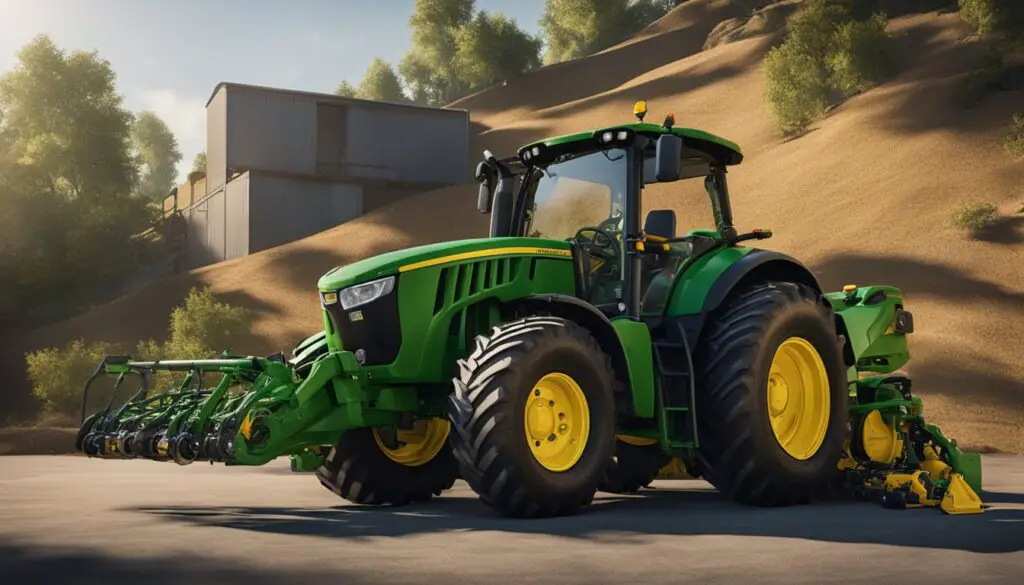
When dealing with a John Deere X350, you might encounter various drive and transmission issues. These problems generally relate to the belt and pulley system, hydrostatic transmission, as well as shifting and linkage components. Here’s how you can identify and address these concerns.
Belt and Pulley
Common Symptoms:
- Frequent Slippage: You might notice that the drive belt tends to slip, especially under heavy load or acceleration.
- Noticeable Wear and Tear: Check the belt for any signs of cracking or fraying, which can contribute to performance issues.
Quick Tips:
- Check Alignment: Ensure that all the pulleys are properly aligned and the belt is tensioned correctly.
- Inspect for Damage: Look for any damaged pulleys or belts and replace them if necessary.
Hydrostatic Transmission
Recognizing Issues:
- Uneven Movement: If the mower moves unevenly or hesitates, the transmission fluid might be low or contaminated.
- Difficulty in Operation: Difficulty in changing speed could indicate transmission problems.
Maintenance Advice:
- Check Fluid Levels: Ensure the hydrostatic transmission fluid is at the proper level and isn’t dirty or gritty.
- Regular Service: Stick to the manufacturer’s recommended service intervals for changing transmission fluid and filters.
Shifting and Linkage
Symptoms to Watch For:
- Difficulty Shifting: If shifting gears becomes hard or the tractor doesn’t stay in gear, the issue could be within the shift linkage.
- Loose Linkage: A linkage that has come loose can result in poor or non-existent gear engagement.
Preventive Measures:
- Tighten Linkage: If your linkage is loose, tightening it might resolve the issue.
- Linkage Inspection: Regularly check the shift linkage for signs of wear and lubricate it to ensure smooth operation.
Steering and Movement
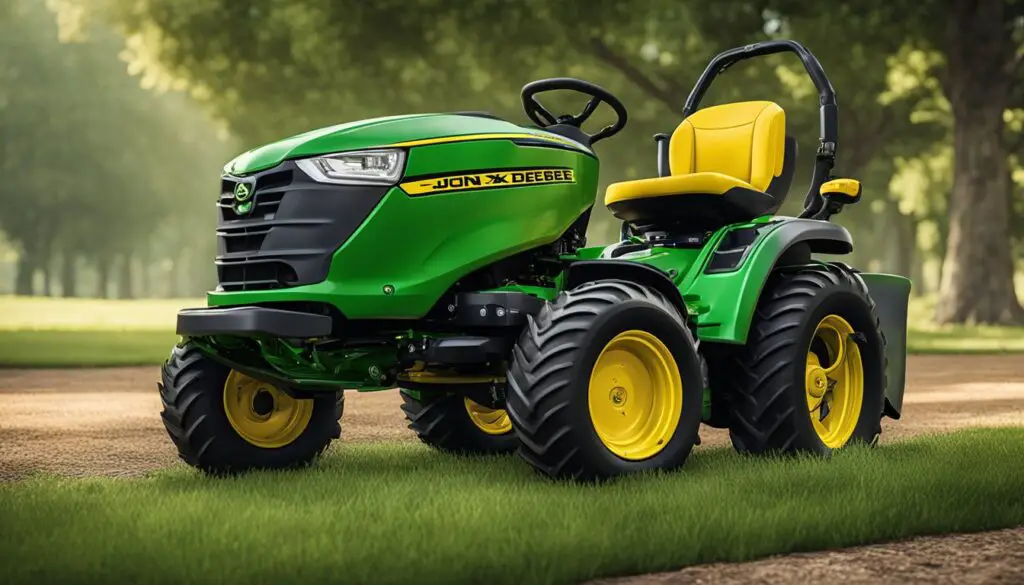
Experiencing steering issues with your John Deere X350 can be quite bothersome. It’s usually related to a few fixable issues, such as improper steering calibration or misaligned tires.
Steering Calibration
Your John Deere X350 ought to maintain straight motion when you steer it, but if it doesn’t, steering calibration may be necessary. Calibration ensures that the steering responds accurately to your input. If you notice sluggish or unresponsive steering, it may be time to check the steering system for worn-out bushings or loose bolts, which can cause excess “free movement.” Regularly inspect these parts, tighten loose bolts, and replace bushings when they show signs of wear.
Tire and Wheel Alignment
Proper tire and wheel alignment plays a critical role in the handling of your tractor. Incorrect alignment can lead to uneven tire wear and may affect the tractor’s steering and stability. Start by checking your tire pressure; unequal pressure can cause the tractor to pull to one side. Then examine the wheels for proper alignment according to the manufacturer’s specifications. Keeping your tires properly inflated and aligned helps ensure smooth steering and prolongs the life of the tires.
Mower Deck and Cutting Quality
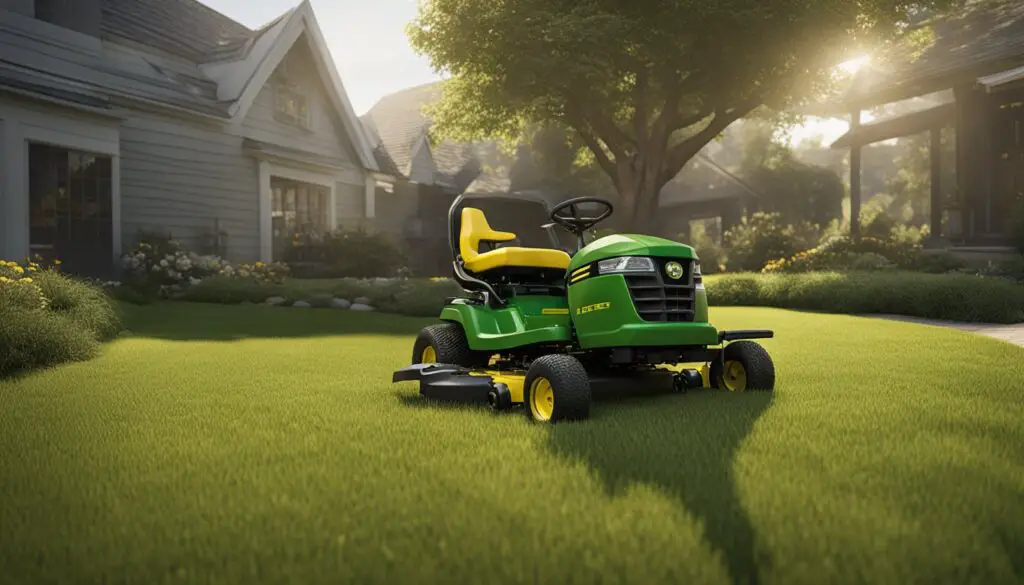
When maintaining your John Deere X350, ensuring the mower deck is appropriately leveled and the belts are correctly tensioned is crucial for optimal cutting performance. Keep an eye out for debris build-up and monitor blade condition to avoid excessive vibration and uneven cuts.
Deck Leveling and Belt Tension
Your mower deck must be level to achieve a consistent cut across your lawn. To check the deck leveling, park your mower on a flat surface and measure the height of the deck at various points. Adjustments can be made by turning the leveling nuts located near the wheels. Proper belt tension is equally important; a too loose belt results in slippage, while a too tight belt causes premature wear. Consult your owner’s manual for specific instructions on checking and adjusting the mower deck level and belt tension on your X350.
- Check deck level: Measure at multiple points.
- Adjust if necessary: Use leveling nuts.
- Belt tension: Should be firm but not overly tight.
Cutting Blade Issues
Sharp and balanced blades are key to a clean and even cut. Dull blades tear the grass, leading to an uneven appearance and possible lawn health issues. If you notice excessive vibration while mowing, it may indicate that your blades are unbalanced or damaged. Regularly inspect your blades for wear and replace them if they’re damaged or too dull to be effectively sharpened.
- Inspect blades: Look for dullness or damage.
- Sharpen or replace: Maintain sharpness for a clean cut.
- Check balance: Reduce vibrations for smooth operation.
Remember, keeping your mower deck in top condition will greatly enhance your mower’s cutting performance and longevity.
Dealing With Corrosion and Rust
When maintaining your John Deere X350, you may encounter corrosion and rust, especially in parts like the battery terminals, fuel system, and the mowing deck. Tackling these issues early on can prevent more serious damage to your tractor.
Battery Care:
- Check the terminals regularly for signs of corrosion—a white or bluish powdery substance.
- Clean them using a mixture of baking soda and water, which neutralizes the acid, and then rinse well.
- Dry the area thoroughly and apply a thin coat of dielectric grease or petroleum jelly to impede future corrosion.
Fuel System Maintenance:
- Keep an eye on the fuel lines and tank for rust formation.
- Ensure caps are tight and seals are good to limit exposure to moisture which can cause rust.
- Replace any rusty components promptly to avoid contamination of the fuel system.
Spark Plug Preservation:
- Remove and inspect your spark plug periodically.
- Lubricate the plug threads modestly to prevent sticking and corrosion.
Mowing Deck Upkeep:
- After use, clean the deck to remove grass and debris, which can hold moisture and promote rust.
- Inspect for rust spots; sand them down and apply a touch-up paint specifically designed for outdoor equipment.
Remember: Regular cleaning and inspection can save you time and money by avoiding the bigger issues that come from allowing rust and corrosion to take hold. Your John Deere X350 is a robust machine, but it still requires your care to stay in top shape.
Troubleshooting Common Problems
When you’re dealing with some of the common issues on your John Deere X350, knowing where to start is half the battle. This brief guide is here to help you identify and resolve two typical problems: starting difficulties and uneven cuts during mower operation.
Starting Difficulties
Encountering issues when starting your X350 can be frustrating, but several checkpoints can help you get to the bottom of it:
- Check the battery: Ensure your battery terminals are not corroded and that the connections are tight and free from damage.
- Inspect the spark plug: A faulty spark plug can prevent your tractor from starting. If it’s dirty or damaged, it may need to be replaced.
- Look at the fuses: Locate and check the fuses. A blown fuse can easily be the culprit and is simple to replace.
- Fuel System: Verify that there’s fresh fuel in the tank and that the fuel lines are not clogged or leaking.
- Safety Switches: Your tractor has safety switches to prevent starting under unsafe conditions. Make sure you’re seated in the tractor and the parking brake is engaged.
By systematically checking each of these areas, you can often find and fix starting issues without needing professional assistance.
Uneven Cuts and Mower Operation
Uneven cuts can turn a well-maintained lawn into a patchwork, but these tips can help you straighten that out:
- Blade Sharpness: Dull blades tear rather than cut grass. Check and sharpen your mower blades regularly.
- Mower Deck Leveling: A deck that isn’t level across will lead to an uneven cut. Consult your operator’s manual on how to properly level your mower deck.
- Tire Pressure: Unequal tire pressure can tilt the mower deck. Ensure all tires are inflated to the specifications in your operator’s manual.
- Speed: Mowing too fast can leave uncut areas and an uneven finish. Slow down, especially over uneven terrain.
Keep your blades sharp and your mower properly maintained, and you’ll be well on your way to a beautifully even lawn.
Preventative Measures and Best Practices
To keep your John Deere X350 lawn mower operating smoothly, regular maintenance is crucial. Here are some friendly tips to help you avoid common engine issues and keep your machine performing at its best:
- Check Oil Levels: Routinely check your engine oil levels and change the oil according to the manufacturer’s schedule. Remember, clean oil is key to a healthy engine!
- Air Filter Maintenance: Your air filter prevents debris from getting into the engine. Clean your air filter regularly and replace it when worn to ensure ample airflow and prevent overheating.
- Fuel System Care:
- Use fresh fuel and avoid leaving fuel in the tank for extended periods to prevent clogging in the fuel system.
- It’s also a good idea to add a fuel stabilizer if the mower will not be used for a while.
- Cooling System: Keep the cooling fins and air intake screen free from debris. Simply use a brush or compressed air to gently remove any build-up.
- Spark Plug and Safety Switches: Inspect your spark plug yearly for wear and tear and replace it if necessary. Also, ensure that safety switches are functioning correctly to prevent starting issues.
**Routine Cleaning Jobs:**
- After every use: Wipe down the exterior.
- Monthly: Check tire pressure and battery connections.
- Seasonally: Lubricate moving parts to keep them working seamlessly.
- Annually: Have a professional service your mower to address any underlying issues.
By following these practices, you’ll maintain your lawn mower’s efficiency and extend its lifespan. Remember, a well-maintained machine not only runs better but is also safer to operate. Happy mowing!
Frequently Asked Questions
When dealing with your John Deere X350, it’s important to be aware of some of the issues you might encounter, especially with the transmission and engine. Here’s a list of FAQs that could help you maintain your lawn mower’s performance and ensure longevity.
What are common issues faced with the John Deere X350’s transmission?
Your John Deere X350’s transmission may experience difficulty engaging, noise while in operation, or hesitation during acceleration. Regular maintenance is key to preventing these issues.
How often should the transmission oil be changed in a John Deere X350?
For your John Deere X350, it’s recommended that the transmission oil be changed every 50 hours of use or once per mowing season, whichever comes first, to ensure optimal performance.
What are the typical signs of engine problems in a John Deere X350 lawn mower?
Signs of engine trouble in the X350 include difficulty starting, irregular idling, reduced power, or excessive smoke. These may indicate spark plug or air filter issues.
What steps should be taken to troubleshoot electrical issues in a John Deere X350?
To troubleshoot your X350’s electrical issues, start by checking the battery’s charge and connections. Then, inspect the safety switches, fuses, and wiring for signs of damage or wear.
Can you explain the warranty terms for the John Deere X350?
The John Deere X350 typically comes with a limited warranty covering defects in materials and workmanship for a specified period from the date of purchase, with some limitations and exclusions.
How can one determine the production origin of a John Deere X350 lawn mower?
To find out where your X350 was manufactured, look for the identification tag on the machine, which typically includes the place of production, or check the serial number with John Deere’s customer service.
Leave a Reply